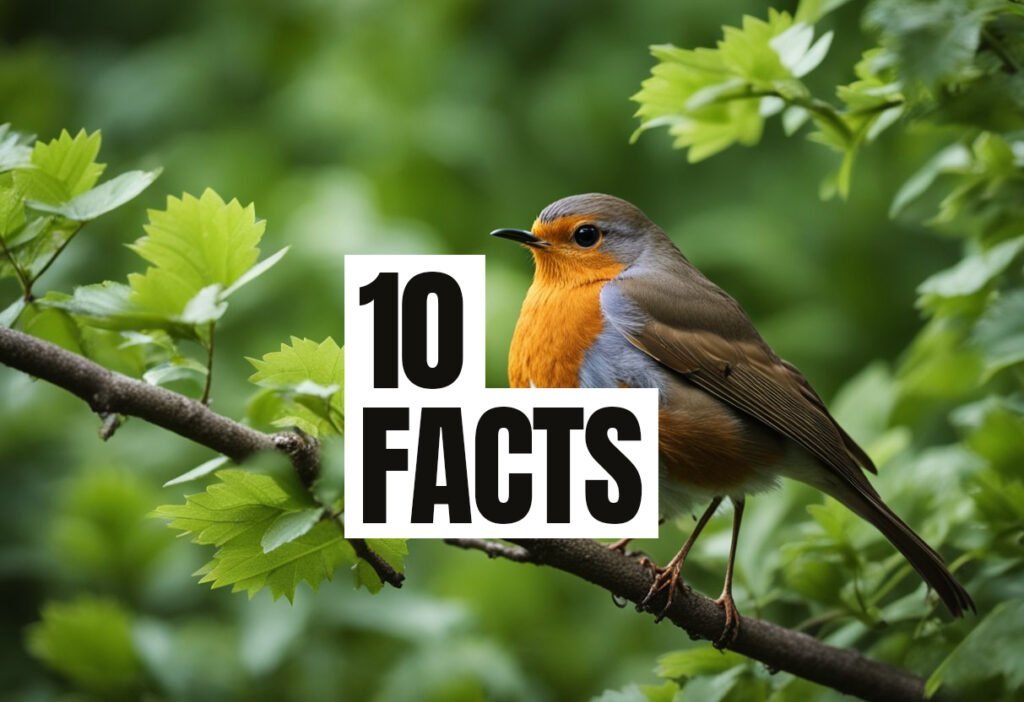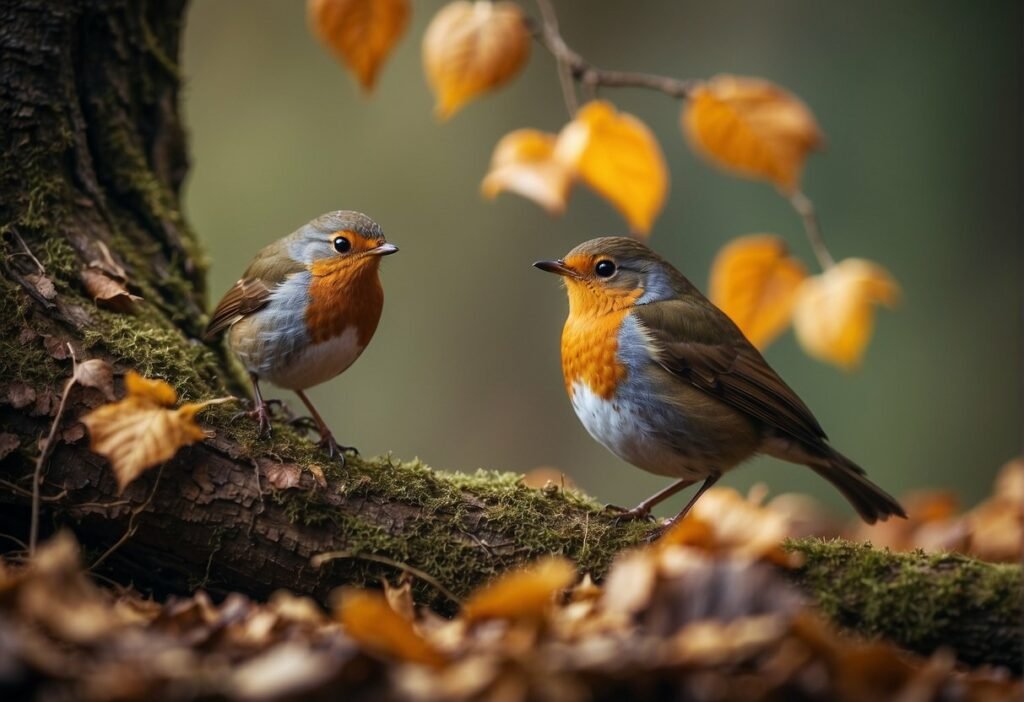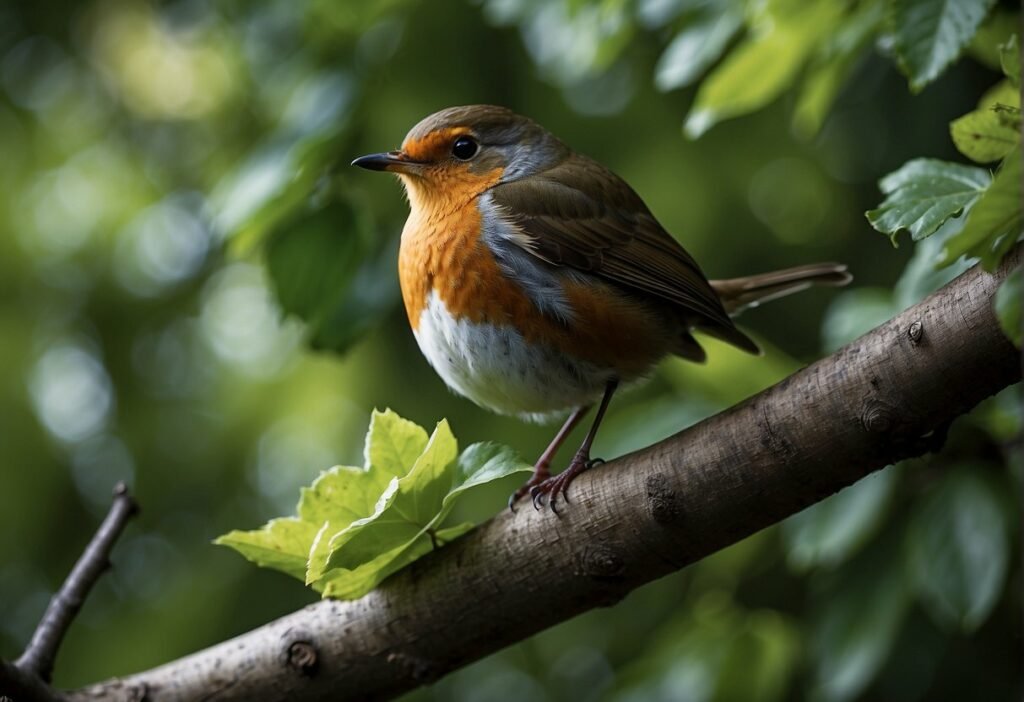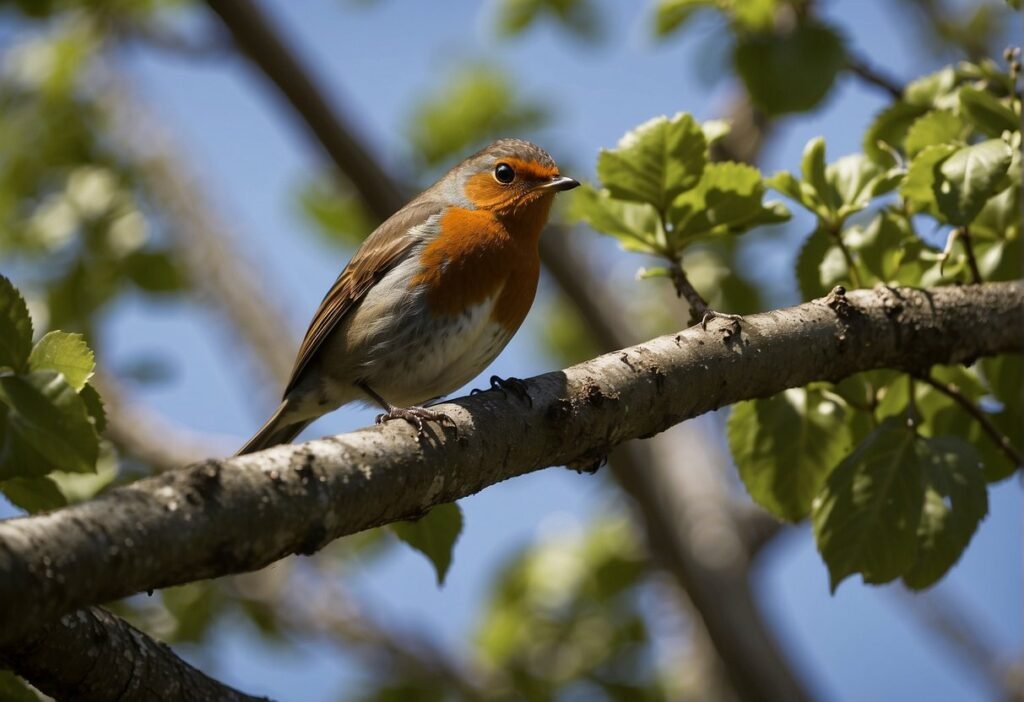Robins are a common sight in many gardens and parks across North America. Known for their distinctive red breast and cheerful song, these birds are a favorite of many birdwatchers. However, have you ever wondered what insects robins eat?

Robins are omnivorous birds, meaning they eat both plants and animals. Their diet varies depending on the season and availability of food. During the spring and summer months, robins primarily feed on insects such as beetles, caterpillars, grasshoppers, and spiders. They will also eat earthworms, which are an important source of protein for many bird species.
In addition to insects and worms, robins also eat fruits and berries. During the fall and winter months, when insects are less abundant, they rely more heavily on these plant-based foods. Some of their favorite fruits include cherries, blueberries, and raspberries. By eating a variety of foods, robins are able to maintain a balanced diet and stay healthy throughout the year.
Dietary Habits of Robins
Primary Diet Components
Robins are known for their preference for insects and worms as their primary diet components. They are skilled foragers and feed on a variety of insects such as beetles, caterpillars, grasshoppers, and spiders. They also feed on earthworms, which make up a significant portion of their diet.
In addition to insects and worms, robins also consume fruits, berries, and seeds. They prefer fruits such as crabapples, cherries, and grapes. During the winter months, when insects and worms are scarce, robins rely more heavily on fruits and berries to sustain themselves.
Seasonal Dietary Changes
Robins’ dietary habits change with the seasons. During the summer months, they primarily feed on insects and worms, which are more abundant during this time. In the fall, they begin to shift their diet towards fruits and berries as they prepare for the winter months. During the winter, they rely more heavily on fruits and berries, supplemented by occasional insects and worms.
During the spring, robins’ dietary habits shift back towards insects and worms as they prepare to nest and raise their young. They also consume more earthworms during this time, as the worms become more active in the soil.
Overall, robins have a diverse diet that includes insects, worms, fruits, and berries. Their dietary habits change with the seasons, and they are skilled foragers that are able to adapt to changes in food availability.
Feeding Behavior and Ecology
Robins are primarily insectivorous birds, and they have a diverse diet that includes various insects, fruits, and berries. In this section, we will discuss the feeding behavior and ecology of robins, including their foraging techniques and locations, as well as the impact of human activity on their feeding habits.
Foraging Techniques and Locations
Robins use a variety of foraging techniques to find their prey. They can be seen hopping along the ground, pecking at the surface to uncover insects, or perching on a tree or shrub to catch flying insects. They are also known to use their sense of hearing to locate prey, and they can detect the movement of insects under the ground.
Robins are commonly found in open spaces such as lawns, gardens, and parks, where they can easily forage for insects and other prey. They are also known to forage in trees and shrubs, where they can catch flying insects or pick berries and fruits.
Impact of Human Activity
Human activity can have a significant impact on the feeding behavior of robins. The use of pesticides in gardens and lawns can reduce the availability of insects and other prey, making it difficult for robins to find food. Similarly, the destruction of natural habitats can force robins to forage in urban areas, where they may struggle to find suitable food sources.
Bird feeders can provide an additional source of food for robins, but they should be used with caution. Over-reliance on bird feeders can cause robins to become dependent on human-provided food, which can lead to a decline in foraging skills and an increased vulnerability to predators.
In conclusion, robins are important insectivorous birds that play a vital role in maintaining ecological balance. Understanding their feeding behavior and ecology is essential for their conservation, and human activity should be managed to ensure the availability of suitable habitats and food sources for these birds.
Frequently Asked Questions
What types of spiders are included in a robin’s diet?
Robins are known to consume a variety of spider species, including orb weavers, wolf spiders, and jumping spiders. They typically feed on spiders during the breeding season when protein-rich food is necessary for the growth and development of their young.
Are moths a common food source for robins?
Moths are not a common food source for robins. While robins may occasionally consume moths, they typically prefer to feed on insects that are more readily available, such as earthworms, beetles, and caterpillars.
How does the presence of snow affect the foraging behavior of robins for insects?
The presence of snow can make it difficult for robins to find insects, as the snow covers the ground and makes it harder for them to access their prey. During winter months, robins may switch to a diet of berries and other fruits to supplement their food intake.
Which insects commonly found in gardens do robins prey on?
Robins are known to prey on a variety of insects commonly found in gardens, including beetles, caterpillars, grasshoppers, and crickets. They may also consume ants, spiders, and other small invertebrates.
Do robins consume any type of beetles or grubs?
Yes, robins are known to consume a variety of beetle species, including Japanese beetles, June beetles, and ground beetles. They may also feed on grubs, such as those found in the soil of lawns and gardens.
What insect larvae are typically eaten by robins?
Robins are known to feed on the larvae of a variety of insects, including moths, butterflies, and beetles. They may also consume the larvae of flies and other small insects.




